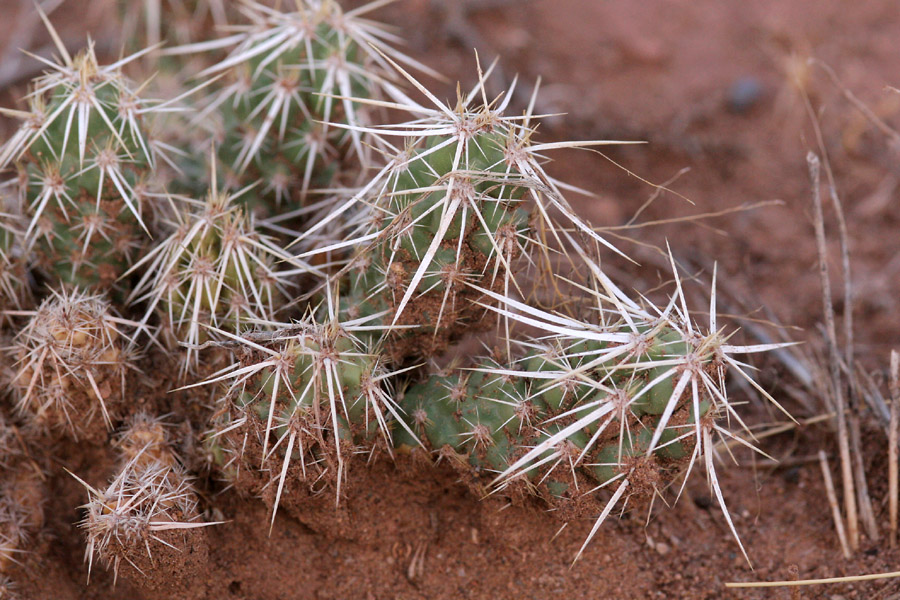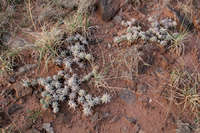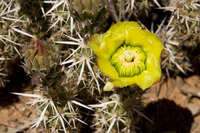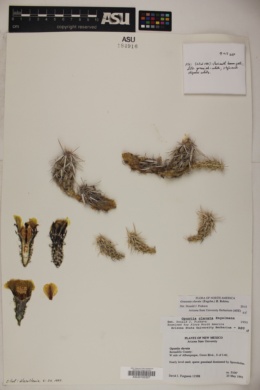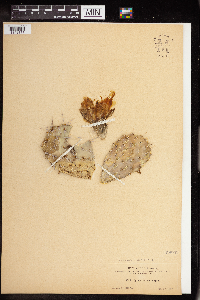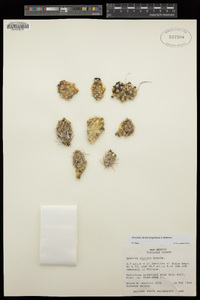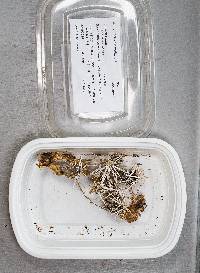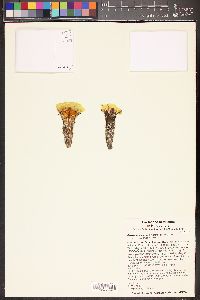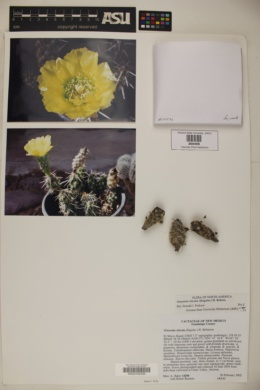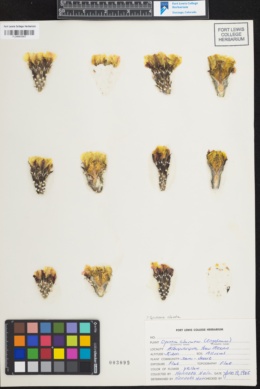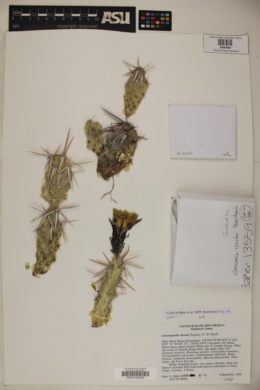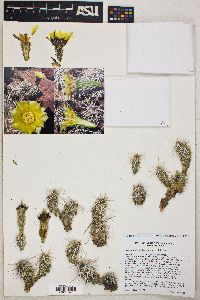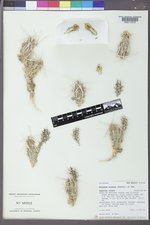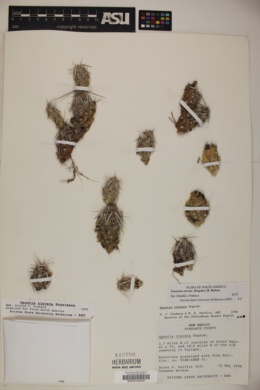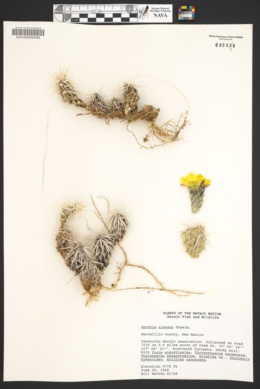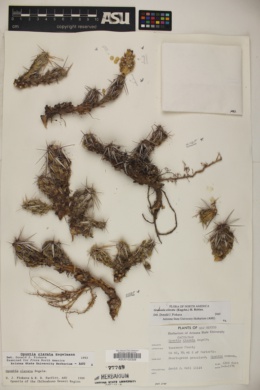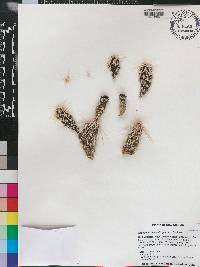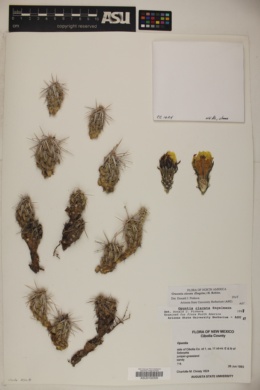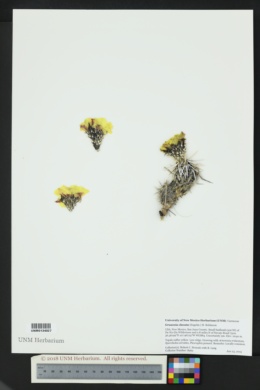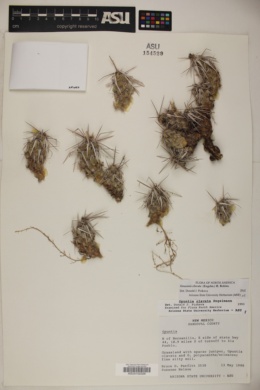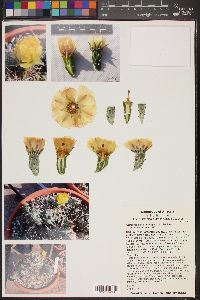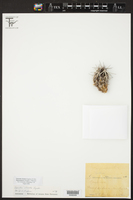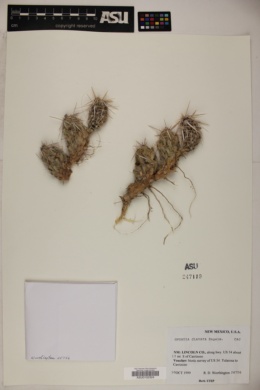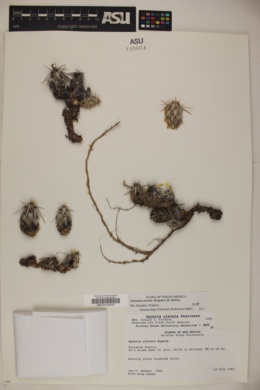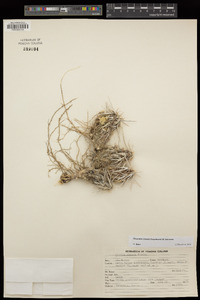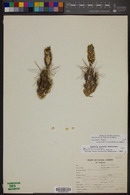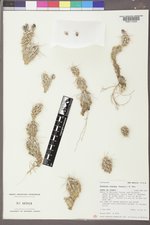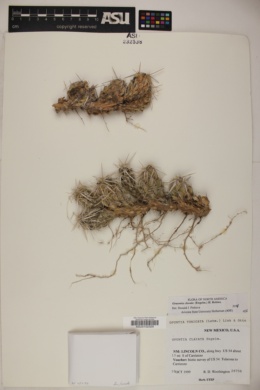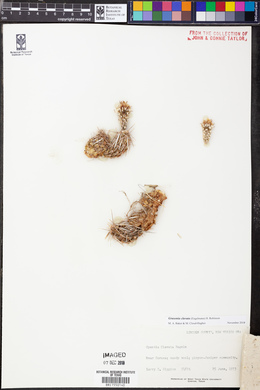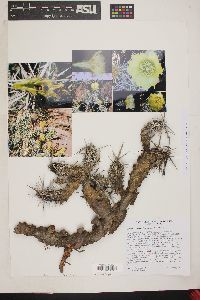Grusonia clavata
|
|
|
|
Family: Cactaceae
Club-Cholla
|
Shrubs, forming mats, widely spreading, 5-15 cm, in series of usually 1-2 stem segments. Roots diffuse. Stem segments short-clavate, strongly narrowed at base, 2.5-5(-7.5) × 1.5-3 cm; tubercles prominent, oval, 5-10(-16) mm, narrow, 4-6 times longer than wide, obscured by interlacing spines; areoles 3 mm in diam.; wool white to gray. Spines 7-15 per areole, primarily in distal areoles; major 3-5 abaxial spines deflexed, white, flattened, longest central spine daggerlike, broadly tapered, 12-35 × 1.5+ mm basally; major 1-3 adaxial spines ascending, white, yellow to tan, angular-flattened to subterete. Glochids in adaxial 1/4 of areole, yellowish white, ± 4 mm. Flowers: inner tepals bright yellow, to 25 mm; filaments light yellow-green to white; style and stigma lobes white. Fruits yellow, barrel-shaped to ellipsoid, 30-45 × 15-25 mm, fleshy, spineless, densely ± yellow-glochidiate; areoles 35-55. Seeds yellowish white, 4.5 × 4 mm, smooth. 2n = 22. Flowering late spring (May-Jun). Great Plains grasslands, open pinyon-juniper woodlands, rocky or sandy soils; 1800-2500 m; N.Mex. L. D. Benson (1982) mapped 'Opuntia clavata' in northeast Arizona, but no supporting specimens have been found. The report may be based on low-growing specimens of Cylindropuntia whipplei, a cholla common in that area.
Allred and Ivey 2012, FNA 2004 General: Low, mat-forming, subshrub-like cactus, 5-15 cm tall and widely spreading along the ground; stems jointed, the plant's height consisting of 1-2 erect stem segments; stem segments shortly club-shaped, and strongly narrowed at the base, 3-8 cm long and 1.5- 3 cm wide, with prominent, narrow, oval-shaped tubercles which are difficult to see through the interlacing spines (tubercles are the regularly-spaced bumps along the stems; the tip of each tubercle has an areole with a cluster of spines emerging from it). Spines: Spines emerge from white or gray areoles. Spines usually 7-15 per areole, primarily in the areoles near the tops of the stem segments; 3-5 of the lower spines in each areole are large, deflexed, white and flattened; the longest central spine is dagger-like, longitudinally ridged, broadly tapered, 1.5 mm wide or more at the base, and 12-35 mm long; the largest upper 1-3 spines in each areole are ascending, angular-flattened, and subterete. Spine color is white or yellow to tan. Each areole also has a tuft of yellowish-white glochids (fine barbed bristles), 4 mm long. Flowers: Petals numerous, bright yellow, to 25 mm long; stamens numerous, with filaments that are light yellow-green to white; style white, topped with a ring of white stigma lobes. Fruits: Fruits fleshy, yellow, spineless, barrel-shaped to ellipsoid, 3-5 cm long and 2 cm wide, with 35-55 areoles, dense with yellow glochids; seeds 4 mm wide, yellow-ish-white, smooth. Ecology: Found in Great Plains grasslands and open pinyon-juniper woodlands, in rocky or sandy soils, from 6,000-8,500 ft (1829-2591 m); flowers May-June. Distribution: NM Ethnobotany: Unknown Etymology: Grusonia is named for Hermann August Gruson (1821-1895), a German engineer and cactus enthusiast, who build Gruson Greenhouses, withthe largest collection of cacti in Europe; clavata means club-shaped, referring to the shape of the stem segments. Editor: AHazelton 2017 |

